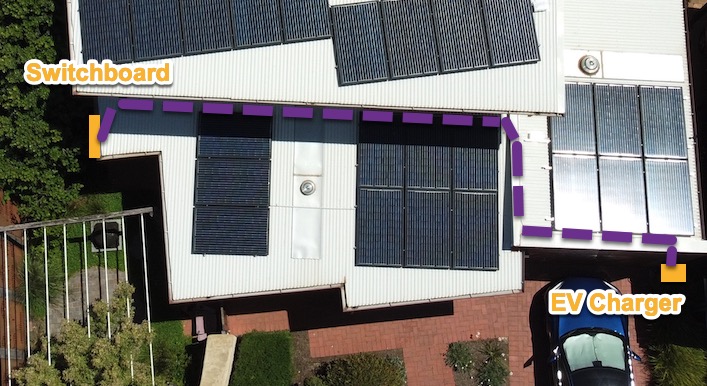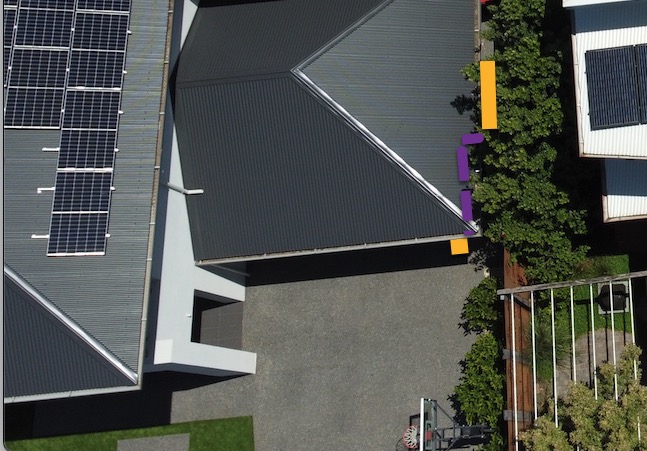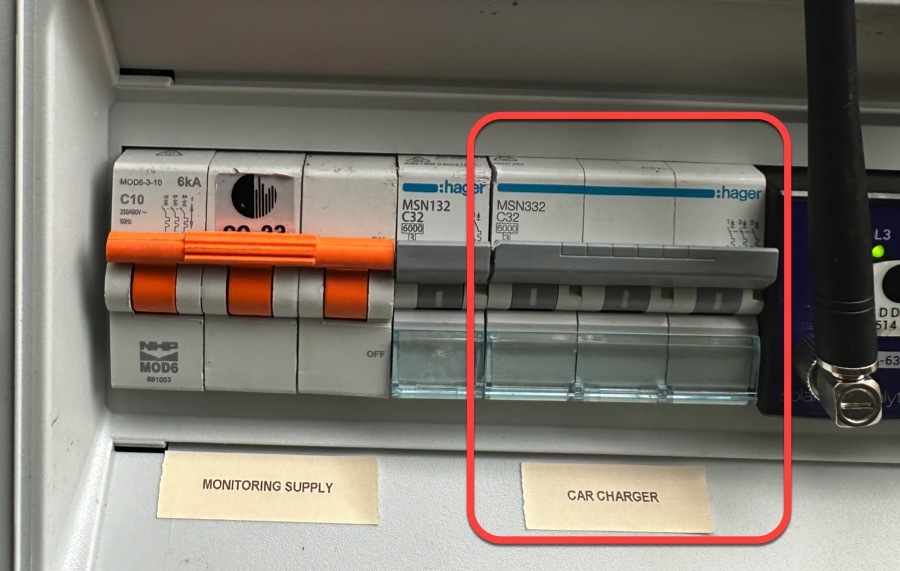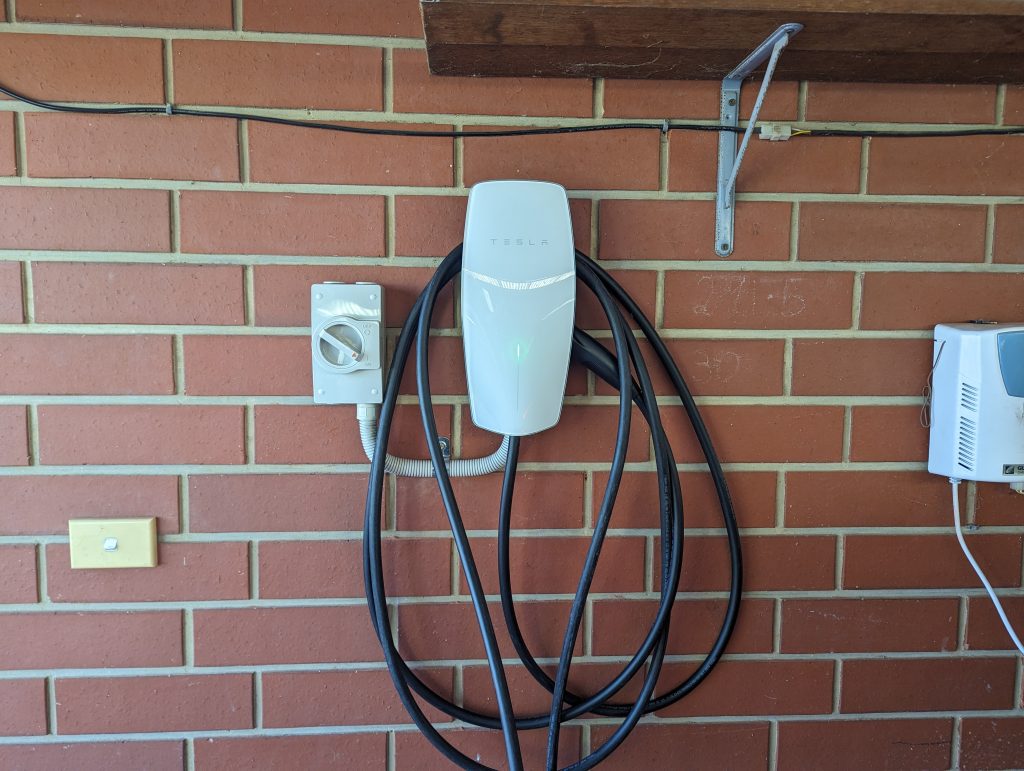EV Charger Installation: What’s Involved?
This guide covers the essentials of home EV charger installation, focusing on power cabling, internet connectivity, and system components like power sensors and isolator switches. Learn about proper cable sizing to prevent overheating, the importance of reliable internet for smart chargers, and the potential need for electrical upgrades to accommodate your EV charger.
Last Updated: 22nd Apr 2024 By Finn Peacock, Chartered Electrical Engineer
- Power Cabling
- Internet Connection
- Integrating With Solar
- Integrating With A Home Battery
- Isolator Switch
- Cable Sizing for EV Charging
- Expensive Extras
Power Cabling
An EV charger is likely the most power-hungry single appliance you’ll ever install.
EV chargers need a dedicated cable from the main switchboard or the nearest sub-board. This will be a single or three-phase cable, depending on whether you’re installing a 3-phase or 1-phase charger.
Install 3-phase if you can
If you have a 3-phase supply, I strongly recommend installing a 3-phase charger. The faster charging speed is worth it, especially in the future when many homes will need to charge more than one EV. A 3-phase installation will add a few hundred dollars to the installation, compared to potentially thousands to upgrade later.
Cabling runs vary in difficulty
The difficulty and cost involved in the cable run depend on your EV Charger location relative to your switchboard.
This is my house. The cable run from the switchboard to my EV charger goes up a wall, through the roof, along two different roofs (I have cathedral ceilings, so I can’t go in a roof cavity), then back through the roof and down a brick wall.

Compare that to my neighbour. His switchboard is on his garage wall with an easy run to an EV charger on the front of his garage:

You’ll need space in your switchboard
You’ll need space in your switchboard for a breaker for the EV charger. If you’ve run out of space, you’ll need a switchboard upgrade, significantly adding to the cost.
One disadvantage of a three-phase EV charger is that your breaker will take up three times the space compared to a single phase:
In any case, bigger is always better. If you need a switchboard upgrade or additional sub board, try to get double the rail space for circuit breakers.

Internet Connection
Smart chargers will need an internet connection for monitoring and/or control. If you are using the cloud to control your charging using a service such as Amber or Charge HQ, a robust network connection is doubly important because no-network will either mean no charging, or degrade your smart charger to dumb .
A hard-wired connection is better than Wi-Fi because it’s more reliable, and there is no Wi-Fi password to worry about. One of the biggest call outs for solar, battery and EV charger installers is to change the wifi-password in the devices they installed after the homeowner gets a new router.
Integrating With Solar
If your EV Charger has smart-solar charging, it needs to know how much spare solar is available to charge with at any time.
There are four ways it may do this:
- With a Current Transformer (CT) which clips around the incoming mains cable and measures the current going into the street (this is your excess solar).
- With a wired connection to a mini ‘smart meter’ in your switchboard that measures the correct current.
- With a wireless connection to a mini ‘smart meter’ in your switchboard.
- Across your home network.
- Across the cloud with an app such as Charge HQ.
Options 1 or 2 require a dedicated data cable to the CT or smart meter in the main switchboard. A 3-phase smart charger will require 3 CTs.
Integrating With A Home Battery
There are three ways to integrate with a home battery:
- Do nothing. Your home battery will empty into your car battery when your car is charging and there’s not enough solar.
- Use an EV charger that can talk to and control your battery (unless your EV charger is the same brand as your home battery, this is unlikely).
- Hardwire your EV charger to be invisible to the battery, so your home battery can’t ever discharge into your EV.
Consider how you want your home battery and EV charger to interact, and choose accordingly. Don’t leave it to the installer to decide. Be warned. Some solar/battery installers may struggle with #3 if they haven’t done it before; most non-solar sparkies will be left scratching their heads at your request!
Be aware that utility meter technicians or basic roof possum electricians may not fully understand solar switchboards and they can easily create problems by misplacing CT coils
Isolator Switch
Technically, an EV charger doesn’t need an isolator switch. However, many install them with a switch or socket outlet for serviceability and easy reset.

Cable Sizing For EV Charging
Some electricians assume that a 6 mm² cable and 32 amp circuit breaker are sufficient for a 7 kW charger. However, they would be wrong in all but the most basic install. Normal circuit design means you want 20% headroom to prevent nuisance tripping. A 6 mm² cable will be marginal for heat dissipation if there’s any bulk insulation.
Some EV charging circuits require 40 amp-rated circuit breakers and 10 mm² cable, bearing in mind that the switchboard needs space to dissipate heat. Some electrical manufacturers specify that EV charging circuits should be rated at twice the nominal load if the switchboard is crowded and liable to become heat-soaked.
Expensive Extras
When a connection to your driveway or garage involves trenching or running long expensive cables, add spare data cables or a spare conduit for future upgrades.
Fueling an EV demands bulk energy. There’s no diversity in the load. It’s hour upon hour of full-rated consumption, which can be a significant extra demand on the grid connection. For example, a single-phase grid connection could only run two EV chargers and nothing else. You may need to upgrade the mains supply to the building to take more amps or even upgrade to 3-phase, and overhaul the switchboard simultaneously.